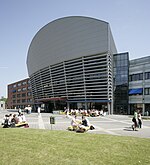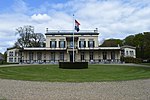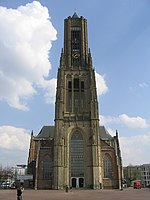Monnikenhuize
1915 establishments in the Netherlands1950 disestablishments in the Netherlands20th-century architecture in the NetherlandsDefunct football venues in the NetherlandsDutch sports venue stubs ... and 6 more
Olympic football venuesSBV VitesseSports venues completed in 1915Sports venues in ArnhemSummer Olympic venue stubsVenues of the 1928 Summer Olympics
Monnikenhuize was a multi-use stadium in Arnhem, Netherlands. It was used mostly for football matches and hosted the home matches of SBV Vitesse. The stadium was able to hold 7,500 people. The stadium was opened in 1915. It was closed in 1950 when Nieuw Monnikenhuize opened. For the 1928 Summer Olympics in Amsterdam, it hosted the consolation first round match between Chile and Mexico on 5 June 1928.
Excerpt from the Wikipedia article Monnikenhuize (License: CC BY-SA 3.0, Authors).Monnikenhuize
Rosendaalseweg, Arnhem
Geographical coordinates (GPS) Address Nearby Places Show on map
Geographical coordinates (GPS)
| Latitude | Longitude |
|---|---|
| N 51.994167 ° | E 5.931111 ° |
Address
Rosendaalseweg 485-109
6824 KK Arnhem
Gelderland, Netherlands
Open on Google Maps











